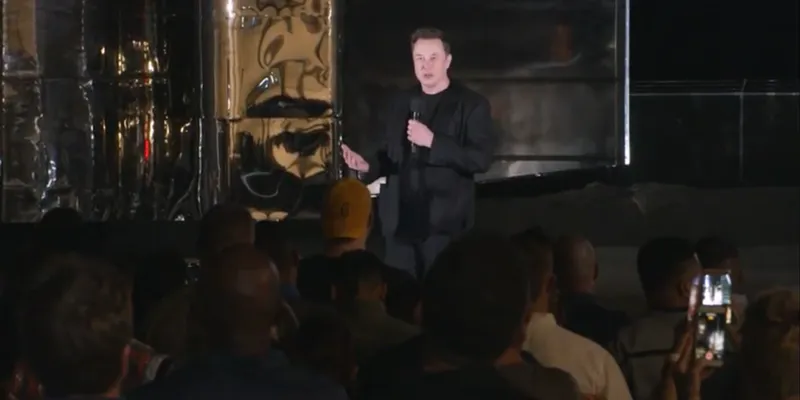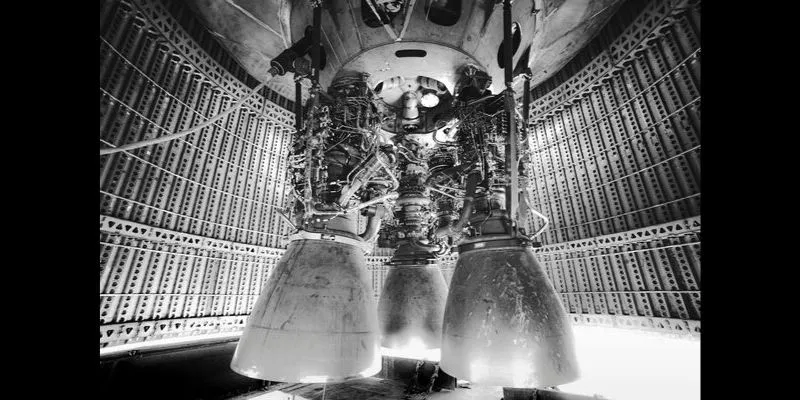We need to make space travel like air travel, says Elon Musk as he unveils new design of Starship Mk I
SpaceX Founder and CEO Elon Musk reveals updates to his company’s next-generation rocket and the schedule for the programme’s development. He is aiming to reach orbit in six months and then fly people.
Mars and the possibility of commercial space travel are not a distant dream anymore, thanks to one man. Elon Musk, CEO and Chief Engineer, SpaceX. The billionaire space enthusiast recently revealed some staggering updates as Space X's Boca Chica Rocket Assembly, located in South Texas, showed its newly built Starship Mk I orbital prototype spacecraft.
The main objective of this prototype would be to at least to reach a height of at least 12 miles before landing back to earth, like Starhopper which flew to an altitude of 500 feet with only one raptor engine.
During the live event, Elon Musk said,
"To become a space-based civilisation is to make space travel like air travel. When you fly a plane, you fly it many times as it is reusable; the same thing is required for space travel."
When asked about human traveling to orbit, Elon Musk said, "We would fly to orbit in Mk IV or V, as we want to reach orbit in less than six months. For now, the Mk II will be ready in couple of months, Mk III may be in three months, and Mk IV in four or five months."

Starship Mk I is seen alongside Space X Starhopper on the right. (Image: Twitter)
The vehicle has been designed to help achieve the company's final design, which will be a super-heavy launch vehicle and a fully and rapidly reusable system designed to carry both crew and cargo to Earth orbit, the Moon, the Mars, and elsewhere in the solar system.
The prototype has been built entirely of steel and stands as tall as 50 meters in height. According to Elon Musk, the body is built out of steel, which will help it withstand higher temperature as compared to other materials like composites. Starship Mk I weighs around 200 tonnes, and goes up to 1,400 tonnes with fuel on-board. This spacecraft would be stacked upon another super-heavy rocket, after which the total weight would be 5,000 tonnes.
The heavy rocket, or the booster, will have around 37 raptor engines along with six landing legs.

Elon Musk makes an announcement at the event in Texas.
Elon said,
"The initial is 200 tonnes, and in series production, it would come down to somewhere 120 tonnes or even less. In terms of usefulness, it could do 150 tonnes with full reusability to orbit and back. The cost of a fully reusable system is its propellant system, which is mostly oxygen. For every one tonne of fuel, three-and-a-half tonnes of oxygen is being used."
The prototype version of the Starship Mk I will have only three massive raptor engines, which are built at Space X's headquarters in Hawthrone, California. These engines have already been tested at its facilities in McGregor, Texas.
The engine setup comprises six engines, including three sea-level engines to help the vehicle steer in its journey, and three vaccum engines used to optimise for efficiency.

The three raptor engines that will power the Starship Mk I. (Image: Twitter)
If reports are to be believed, the spacecraft and the rocket could go into commercial market in early 2021. In its maiden flight, the setup is likely to carry communication satellites.
Moreover, Elon Musk also has a plan to establish a base camp on Moon, following which he also proposes sending people to any location within an hour. Apart from sending humans to various locations on and off the Earth, Starship the spacecraft could also be used to send payloads to International Space Station.
(Edited by Teja Lele Desai)










